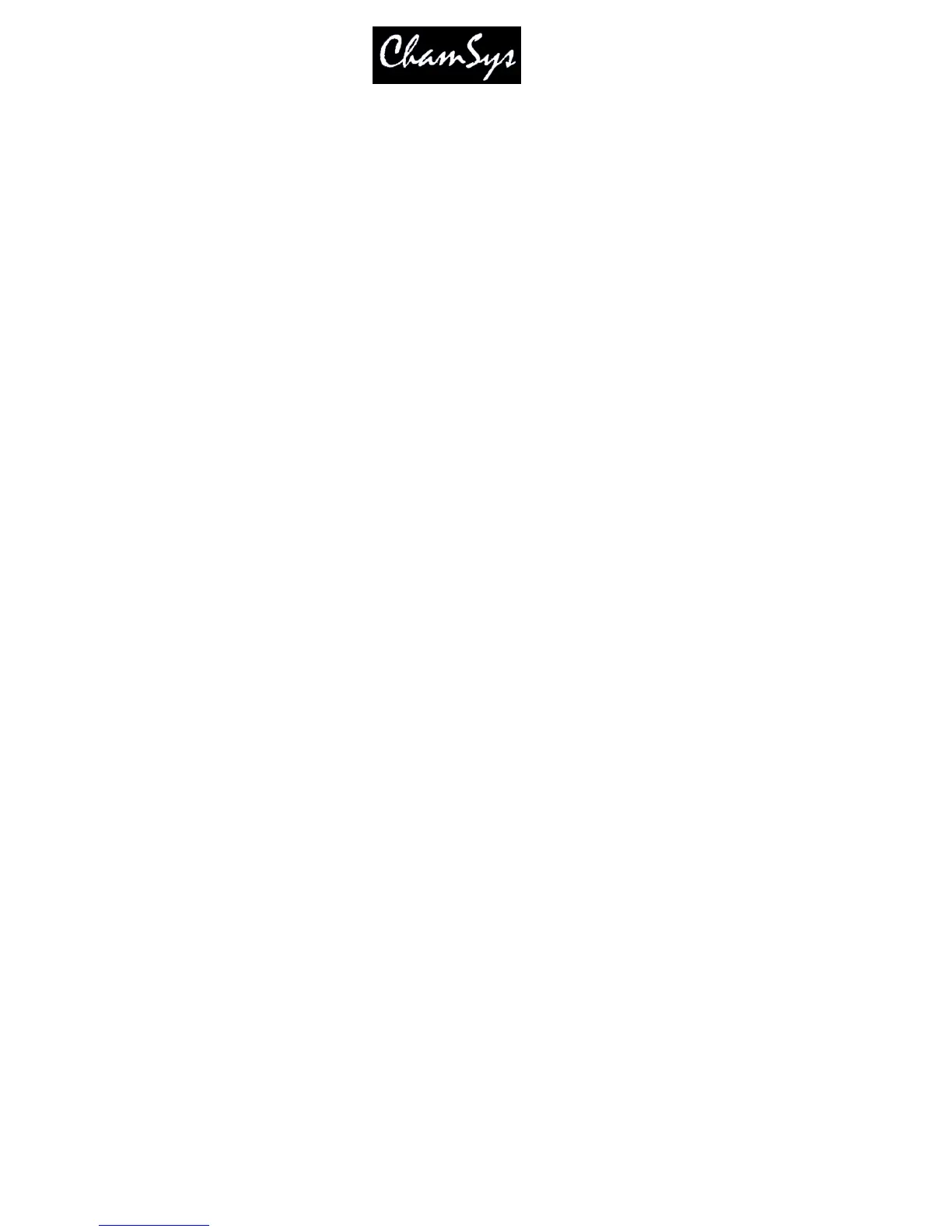ChamSys Ltd www.chamsys.co.uk
MagicQ User Manual 110 Version 1.4.9.0
13.3.2 The Halt field
This field determines whether MagicQ waits for the user to press GO before executing the next Cue. It
can also be use to setup Cue triggers from the remote interface, Scheduled events or timecode.
Pressing ENTER only toggles between Yes and No. To get the advanced options, such as Timecode,
Scheduled or Remote either double click the field or press SHIFT + ENTER.
13.3.3 Cue Delay and Fade times
The Delay and Fade times shown in the Cue Stack Window are properties of the Cue whilst the Wait time is a
property of the Cue Stack. Modifying the Delay and Fade times of the Cue may affect other Cue Stacks that
use the Cue.
The Delay and Fade time fields show the maximum delay and fade times used by any channel within the Cue –
so giving a summary of the maximum delay and fade of the Cue. To view the actual times of the Cue move the
cursor to the Delay or Fade field and press the View Cue soft button. This opens the Cue Window for the
selected Cue, automatically showing the Cue Times.
Delay and fade times can be entered directly in the Cue Stack Window – note however that this will set the
times for all attributes. If you wish to change just the times for Position, Beam or Colour then these should be
set up in the Cue Window, Simple View for general times or Cue Window, Advanced View for channel
specific times.
Split intensity in/out times can be entered
into the Cue Stack Window in the Delay and Fade fields using /.
For example, 2/3 entered in the Fade field will produce an in fade of 2 seconds and an out fade of 3
seconds. Only intensities times are affected – Beam, Colour and Position times remain at their current
values.
When executing Cues, MagicQ will primarily use the specific delay and fade times entered in the
Advanced View, of the Cue Window. If no times are specified, then the general times used in the Simple
View will be used.
Times can be added in the Advanced View using the keypad and can be removed using the REMOVE
button. In the Advanced View, the times shown are fade times, except where delay times have been set
up, then times are shown as delay/fade.
Times can also be set up for the selected heads in the Simple View.
In the Cue Stack and Cue Windows delay and fade times with a ‘>’ symbol after indicate when there are
advanced times set for the Cue.
13.4 Tracking
By default the MagicQ works in a similar way to most traditional lighting consoles, in that what is in the
programmer is recorded into the Cue. This is a "no nonsense" mode where you get what you expect
recorded into your Cues.
If you program just a FX chase on pan and tilt into a Cue, then that is what you get. If you program a
complete look for a head including all the attributes, then that is what you get. Looking at a Cue in the Cue
Window gives you the full picture.
In a Cue Stack, you can choose for each Cue whether the Playback continues to control HTP and LTP
channels used earlier in the Cue Stack but not stored in the current Cue. In the console “Normal Mode”
the LTP channels are tracked, but HTP channels (Intensities) are not.

